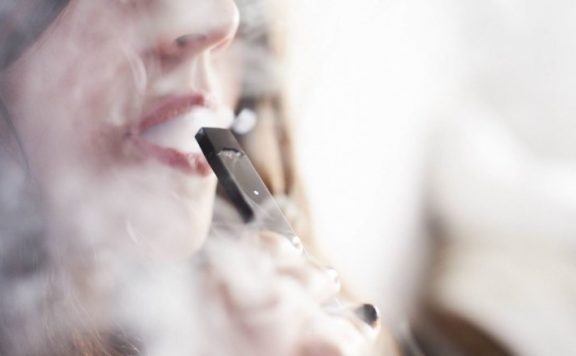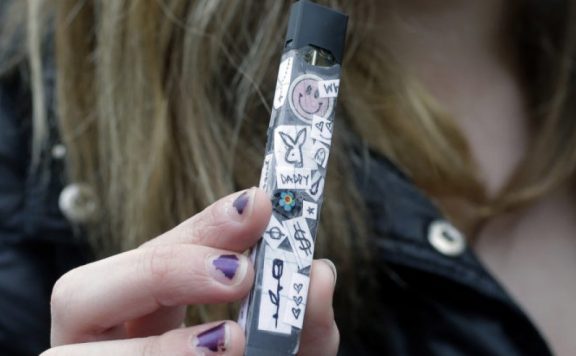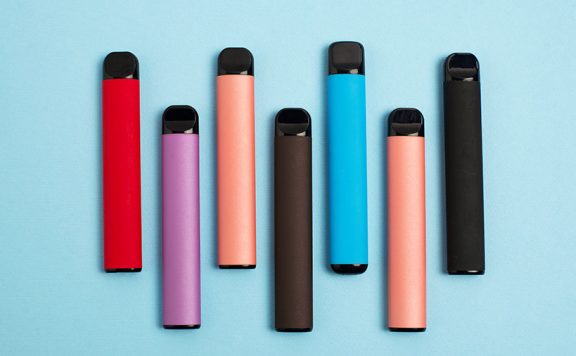A recent study from the University of Georgia suggests that adolescents who engage in more physical activity may use electronic cigarettes, often known as e-cigarettes or vapes, more frequently than their less active counterparts.
According to the study, which was published in Tobacco Use Insights, high school students who reported being physically active were more likely to use vaping devices than their peers who were just active one day per week or fewer. When compared to their less active counterparts, teens who reported engaging in at least 60 minutes of physical exercise four to five days per week were 23% more likely to smoke an electronic vapor product.
This is the first survey to demonstrate a relationship between levels of physical activity and the likelihood that American adolescent users of e-cigarettes will use them.
“Our youth who tend to be on the healthy spectrum for physical health have heightened risk of utilizing electronic vapor items. This may be because vaping is regarded to be a healthier option than traditional smoking, “said Janani Rajbhandari-Thapa, the main author of the study and an associate professor in UGA’s College of Public Health.” Marketing campaigns have promoted vapes as a healthier alternative to conventional cigarettes, but data indicates that additives in vape products have been linked to lung damage caused by using e-cigarettes or other vaping products.”
It is a serious issue if young people believe vaping is preferable to smoking traditional cigarettes.
Vape juice contains many substances that could cause cancer.
The fact that “healthy” teenagers who are engaging in the prescribed level of physical activity for their age group are more likely to start vaping defies logic.
According to prior research, alcohol abuse and participation in sports are related, Thapa stated. Teenagers engaged in athletic teams or group sports may be victims of peer pressure to get involved in alcoholic drinks in celebrating their victories as a way of enhancing team unity. They might also have more extensive social networks than teens who don’t participate, which increases the chance that they’ll feel more pressure from others to engage in risky activities.
It’s a recipe for teenage addiction when you consider that some younger vape users have the mistaken impression that all they’re breathing is water vapor with nicotine and a few minor chemicals.
However, according to the U.S. Department of Health and Human Services, “water vapor” may also include other unknown, potentially cancer-causing compounds, flavorings associated with lung disease, and benzene, which are present in car exhaust.
According to the Centers for Disease Control and Prevention, nicotine concentrations in vape devices can vary greatly, although e-cigarettes may contain more chemicals than conventional cigarettes do. Vapes are a common choice for young people since they are typically less expensive per use, don’t smell like tobacco, and may frequently be “smoked” in locations where tobacco products are prohibited.
Vaping is not acceptable, and we need to make parents more aware of this, added Thapa. “As a parent, if I remove my knowledge of public health, I might assume,” Well, my child isn’t smoking.” It’s acceptable that he vapes. That’s not the case, though. We have proof of the harm caused by vaping.”
According to the Georgia Department of Public Health, prior studies have demonstrated that e-cigarettes can result in a number of risky medical conditions, such as vape-associated illness, a potentially fatal condition that leads to severe respiratory symptoms such as shortness of breath, fever, and cough.
11% of high school students in Georgia admitted to using electronic vapor products.
The 2018 Georgia Student Health Survey 2.0, an annual anonymous survey conducted by the Georgia Department of Education, provided the researchers with the data they needed. Over 362,000 high school students in Georgia who attended 439 different schools participated in the study and provided survey responses.
At least once in the previous month, more than 10% of the students claimed to have used an electronic vapor device, including an e-cigarette, hookah pen, vaping pen, or e-pipe.
The study’s findings revealed that 7% of high school pupils in the state had used electronic vapor products at least once over the previous 30 days. A further 4% admitted to smoking both conventional cigarettes as well as vape products. Exclusively 1% of people reported using only traditional smoking. This indicates a low prevalence of traditional tobacco product use.
The likelihood of male students vaping or smoking cigarettes was higher compared to that of female students, while children in higher grades reported consuming both vape products and conventional smoke at higher rates compared to lower-grade high school students.
The likelihood of smoking traditional cigarettes or combining them with vaping devices was lower among more active students. However, they were more likely to admit to only using electronic cigarettes.
“The greater likelihood of vaping among physically active students who are complying with physical exercise recommendations raises a worry of health belief as well as involvement in unhealthy practices,” Thapa added. “I want to share this data with our state legislators so they can directly address the risky substance use behaviors that young people in our state engage in.
“Since vaping poses a concern to high school students, we want our research to guide those policies including restricting marketing, forbidding vaping near schools, and enacting school-level regulations to prevent vaping.”






